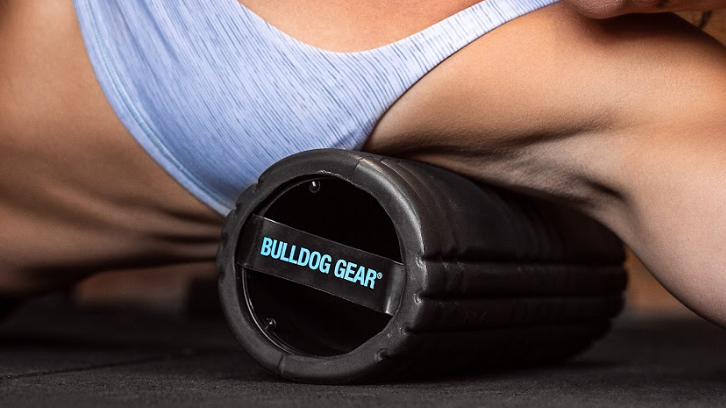|
14/12/2021 | Andrew Tracey |
Sit-ups, crunches, planks and the obligatory, tangental mention of low body fat, have historically hogged all of the press, both good and bad, when it comes to core training. But to try and build a truly unshakeable trunk with these four alone is akin to trying to build a house from chocolate- it might look good, but it’s liable to crumble at the first sign of pressure.
There are few movements that don’t rely on your core musculature in one way or another, whether for stabilisation, transfer of power or creating power in it’s own right; there’s really not a lot of areas of you physically that don’t stand to benefit from a stronger, more capable trunk.
When you’re ready to ditch the crunches, stand up to sit-ups, and turn your back on planks (quite literally), we’ve got five movements that you need to be doing.
ATLAS BALL CRAWL PUSH/PULL
Combining a crawl, a push and a pull we’re forcing our core to stabilise, extend and flex hitting it from all angles. A full body movement that won’t detract from the rest of your training, but acts as a ‘fun’ finisher, building not just a strong, versatile core but also improving your balance, coordination and sense of timing.
Drop onto all fours, lifting your knees from the ground, with an atlas ball in front of you. Push the ball away with one hand, then crawl forward to close the gap, before pushing it again with the opposite arm. Alternate in this fashion until you’ve covered 10-20m, at this point roll the ball backwards, under your chest, then crawl backwards, before rolling it again with the opposite arm. Alternate sides moving backwards to your starting point, keeping your knees from the floor and hips low throughout.
SUITCASE CARRY
The farmers carry is a tour de force in the movement world that allows us to massively overload our bodies, building a strong back, grip and of course core in the process. Want to emphasise the ‘core’ part of that last sentence? Then drop down to one handle. A correctly executed suitcase carry will force your core to act to stabilise you in planes that are often missed in conventional training, despite being very present in real life.
Deadlift a heavy dumbbell, kettlebell or farmers handle from the ground. Stand tall and squeeze the fist of your opposite hand to create tension, keep your torso as upright as possible, stabilising against the weight. Stride forward purposefully focussing on maintaining an upright torso, strong grip and tension throughout your upper body. Turn around and walk back, forcing your core to further stabilise against the turn. Switch and repeat on the opposite side.
L-SIT ROPE CLIMBS
If you’re only here for a stronger core and aren’t interested in a bigger back and massive bicep gains, look away now.
Still here? Good.
The rope climb is probably one of the most slept on movements of all time, building unrivalled strength, coordination and size, as well as seriously zombie-proofing you in the event of an apocalypse.
Once you make the jump to the legless rope climb, things get even more interesting. By lifting your legs into an L-sit position throughout the climb and descent your core and hip-flexors don’t just work isometrically to hold them there as they do in a traditional L-sit, but also dynamically as each pull on the rope causes them to fight against momentum to remain static.
Begin with ‘knees raised’ climbs if necessary before progressing into a full L-sit.
CHINESE PLANK
A traditional plank focusses on ‘anti-extension’, the muscles of your trunk, primarily your abdominal muscles working to stop you collapsing into an exasperated heap (and subsequently, your spine moving into extension), the Chinese Plank flips the script, strengthening the equally important ‘anti-flexion’ action of your core. Not content to simply equal the standard plank, this variation goes one further, bringing in several major muscle groups that you can’t see in the mirror, such as your upper back, glutes and hamstrings.
Arrange two boxes or benches so that they are around 5-6ft apart, depending on your height. Position yourself between them with your upper back resting on one, and your heels on the other. Use your glutes and hams to lift yourself from the ground, finishing in a strong ‘plank’ position, face up, your core and posterior chain working to hold you suspended between the two benches. Hold this position for as long as possible.
Be warned, time passes slowly here.
ZERCHER CARRY
More back, more biceps? It’s like we have an agenda to get you jacked whilst also strengthening that midriff.
Just like the Chinese Plank above, the Zercher Carry weaves it magic via ‘anti-flexion’, ie. not allowing a a heavy weight to fold you over like origami. As well as hitting your core, the muscles of the upper back play a pivotal role meaning this posture fixing one-two punch is the ideal tonic if you spend your days hunched over a computer.
Take a barbell out of a rack, or lift it safely from the floor, resting it in the crook of your elbows (this is going to feel very uncomfortable to begin with, as most good things do). Stride forward purposefully, focussing on breathing into your belly and maintaining an upright torso throughout. Bonus ‘anti-rotation’ points for turning around at the halfway mark.



